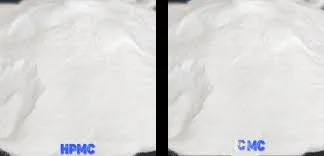
Sep . 23, 2024 02:24 Back to list
redispersible powder polymer
Understanding Redispersible Powder Polymers Applications and Benefits
Redispersible powder polymers are a vital component in modern construction and manufacturing materials. These fine powders are primarily derived from water-based polymer emulsions, which are transformed into a free-flowing powder form through a process known as spray-drying. The result is a product that can easily be re-dispersed in water, maintaining its original properties. This unique characteristic makes redispersible powder polymers highly advantageous in various applications, particularly in the construction industry.
One of the primary applications of redispersible powder polymers is in tile adhesives and grout. When mixed with these products, they enhance adhesion, flexibility, and water resistance, which are crucial for ensuring that tiles remain securely bonded even in moist environments. The incorporation of such polymers improves the overall durability and performance of the adhesives, ultimately leading to longer-lasting installations.
Another significant use of redispersible powder polymers is in polymer-modified dry mortars. These are commonly used in plastering, rendering, and other masonry work. The polymer modification provides improved workability, enhances the bond strength between substrates, and increases resistance to cracking. This is especially important in outdoor applications where moisture exposure can compromise the integrity of the material.
redispersible powder polymer

Redispersible powder polymers also find applications in the manufacturing of paints and coatings. When added to paint formulations, they can improve the film formation, adhesion, and durability of the coatings. As a result, surfaces treated with polymer-enhanced paints exhibit better resistance to weathering, UV degradation, and mechanical stress. This translates to longer-lasting aesthetics and protection for buildings and infrastructure.
Furthermore, these polymers can be utilized in the production of flooring compounds and self-leveling mortars. By providing flexibility and enhancing the mechanical properties of these materials, redispersible powder polymers help create smoother surfaces and improved load-bearing capabilities, essential for both residential and commercial flooring applications.
The environmental benefits of redispersible powder polymers should not be overlooked. As they are water-based, they typically contain lower levels of volatile organic compounds (VOCs) compared to solvent-based alternatives, making them a more environmentally friendly option. This aligns well with the growing demand for sustainable construction solutions and the increasing emphasis on green building practices.
In conclusion, redispersible powder polymers are a multifaceted solution that enhances the performance and longevity of numerous construction materials. Their ability to improve adhesion, flexibility, and resistance to environmental factors makes them indispensable in today’s construction projects. As the industry continues to evolve with a focus on sustainability, the adoption of these innovative materials is likely to increase, paving the way for safer and more durable building practices. Understanding the benefits and applications of redispersible powder polymers is essential for manufacturers, contractors, and builders aiming to improve their construction methodologies and deliver superior quality results.
-
Versatile Hpmc Uses in Different Industries
NewsJun.19,2025
-
Redispersible Powder's Role in Enhancing Durability of Construction Products
NewsJun.19,2025
-
Hydroxyethyl Cellulose Applications Driving Green Industrial Processes
NewsJun.19,2025
-
Exploring Different Redispersible Polymer Powder
NewsJun.19,2025
-
Choosing the Right Mortar Bonding Agent
NewsJun.19,2025
-
Applications and Significance of China Hpmc in Modern Industries
NewsJun.19,2025







